What a fascinating island, Montserrat! In mid-January, after leaving Nevis, we had a nice easy day sail there, arriving in Little Bay in the early afternoon. We made arrangements for a tour the next morning. We had a recommendation for a tour guide from other cruisers, and that was a good choice. Joe Philip was born here and lived through all the volcanic events. He had all his photos loaded on his ipad, and when he would stop and point things out, he would pull up the “before” picture, to show us what it used to look like. It put a very human touch to the tour – really gave an idea of what they have been living with. One photo shows people in the town of Salem, which is outside the danger zone, going about their normal business while the volcano is blowing its stack in the background – you would think everyone would be panicking, running, but no, they were just ignoring it! Apparently because they have been living with a live volcano for 10+ years now, they get dozens of “events” every year, so it’s business as usual unless told otherwise.
The Soufrière volcano was dormant for 400 years, then woke up in 1995. In the 100 years leading up to 1995, the island’s main town of Plymouth had had several earthquakes and suffered some damage from them, but it was still a thriving town, the capital of Montserrat and it’s main sea port. In 1995 it had to be evacuated when the dormant volcano awoke, shooting a steam column thousands of feet into the air and roaring like a jet engine. It covered Plymouth and surrounding areas with thick ash clouds causing it to go dark for 15 minutes, and spreading ash for hundreds of miles in the air. Pyroclastic flows travelled into Plymouth and several nearby towns. Nineteen people were killed, and ten more went missing. From then on, the volcano has never been inactive, with dozens of “events” each year. Larger blasts that caused further damage occurred every couple of years, the last big one having been in 2010. In the early years, scientists put up a volcano monitoring station, the Montserrat Volcano Observatory, on a hill with a good view but a safe distance away. They monitor the volcano 24/7. We went there for a half-hour video presentation, which was very interesting, explaining the science and showing videos of the last blasts and the pyroclastic flows. This is not what you typically picture as lava coming out of a volcano. Pyroclastic flows are hot mixtures of rock fragments, gas, and ash that travel down the sides of the volcano on cushions of hot air. They look like avalanches, and travel at 160km/hr with temperatures around 800 degrees Celsius, destroying everything in their path. The videos of that were frightening indeed.
Looking down from the observatory deck, the hills and the valleys below now mostly all look incredibly lush and green. Joe, our tour guide pointed to a verdant area in a valley and showed us pictures of what it used to look like, full of houses, schools, churches etc., none of which could you see now. Then he pointed out what you could sort of see looked like it must be a river bed through the bottom of the valley, and told us he was taking us there, across the river, to see his former town of Cork Hill. The town is in the part of the exclusion zone that is accessible by day with a guide. So he drove us over what used to be the river, showing us photos of the former road and bridge to his town that are all buried under the pyroclastic flows.
Going up the hill from the river valley, he started pointing out the abandoned houses – you really had to look for them. In the ten years since they were evacuated, the jungle foliage has taken over and every house is hidden behind lush overgrowth, which was why we couldn’t see them from up top at the observatory. His town is still more or less standing, with a layer of only a foot or two of ash over it, but it is unfit for habitation because of the ongoing danger. His tour of his town, pointing out where he lived, where he and his son had gone to school, their church, all made it very real and personal, highlighting the human impact of the disaster.
Next he took us to a former condo development that borders on the part of the exclusion zone that is still completely off-limits.
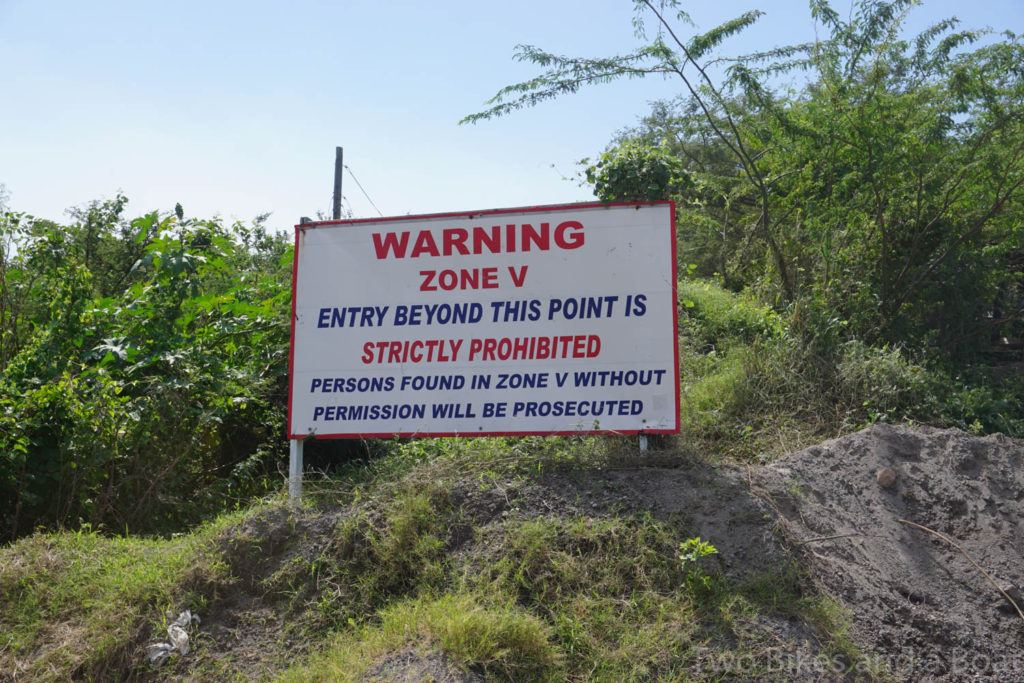
We were able to walk into one of the apartments and stand on the balcony, which had a layer of fine ash on it, to look at the volcano and the massive destruction area of Plymouth. Incredible. You could see chimneys, smoke stacks, and a few roofs of taller buildings, but that was it – the rest was buried. I can’t even describe the extent of the devastation. A whole city, buried under tons of rock and ash.
We learned that prior to the volcano awakening, Montserrat’s population was about 12,000 people. About half the population lived in the danger zone, and had to be moved and put up in makeshift shelters in schools and churches on the north end of the island, which is protected from the volcano by mountains. After a while, a lot of those who had lost everything, their houses, jobs etc., started to leave the country and move to London. The population dropped by half and kept falling each year. Great Britain told the remaining residents that if the population of the island dropped below 1,500 people, that they would all be evacuated to London and the island abandoned. So the community leaders, who did not want this to happen, came up with plans to attract new residents from neighbouring islands, and managed to get the population up to its current level of about 5,000. There was lots of work to do re-building, and they started a new industry harvesting and sifting the pyroclastic flows to yield sand and gravel that they now ship all throughout the Caribbean for concrete mixing and construction use. Plus they have been building up tourism, with a new port and facilities for cruisers like us. Determined people, they are saving their island.
The next day we left port and sailed around the east side of the island on our way to Guadeloupe. This brought us by the other side of the volcano that we hadn’t seen the previous day. Again, fascinating to see the remnants. A whole airport disappeared, leaving not a trace of a tower or any other infrastructure.
The previous day we had been able to see the fissures up the sides of the volcano near the top that were emitting steam, but it would drift up and join with the clouds at the top, and it was hard to tell what was volcano steam versus clouds coming down over the top of the mountain. But this day was much clearer, and the steam vents much more obvious from our vantage point on the water. We sailed along the shore for a while before heading south towards Guadeloupe. After a while sailing, I looked back, and said to Matthew “have a look back at that volcano, I’m sure it wasn’t doing that while we were there”. Sure enough, it was now shooting a column of steam and ash straight up into the air. We watched as the darker ash spread out and rained down on part of the island before heading out to sea. The steam column would die down for a few minutes, then shoot up again. This went on for at least half an hour while we watched it through the binoculars. It created a mushroom-shaped cloud above the volcano. We actually got to see what they call an “event” with our own eyes! I was glad we were far away, but it was sure fascinating to watch.
The next day I checked out the Montserrat Volcano Observatory (MVO) Facebook page, and there were notices about the previous day’s activity, re-assuring everyone that it was perfectly normal, just an everyday event that perhaps had more people, even some from the other islands, concerned because they could see it more clearly and the wind direction had shifted. In other words, what to us was scary and exciting, was “business as usual” for the residents of Montserrat. Such resilience.


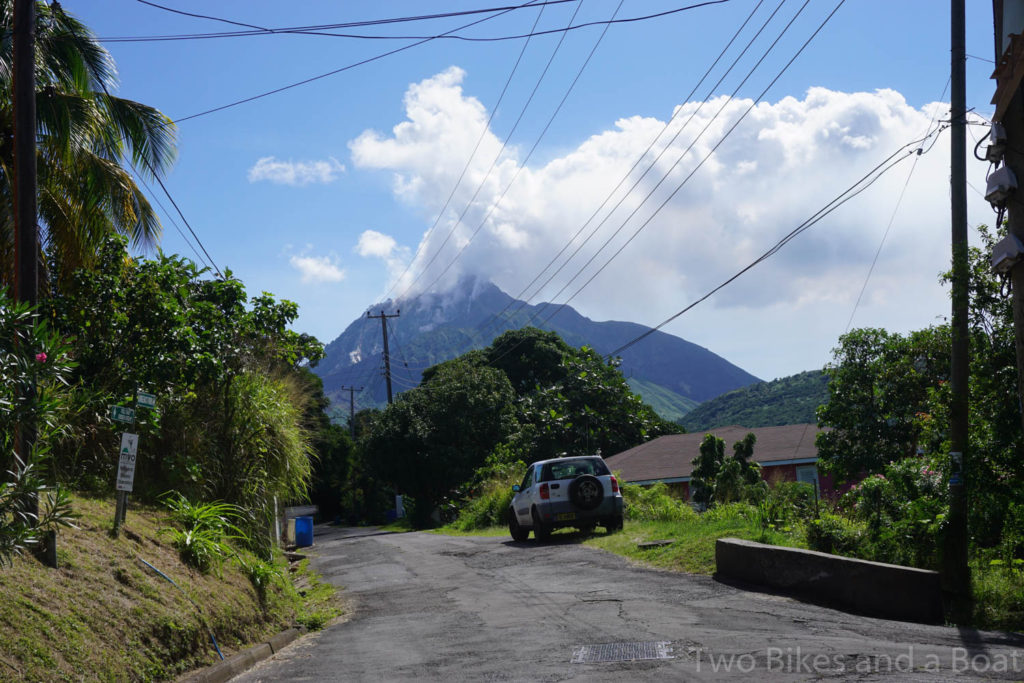

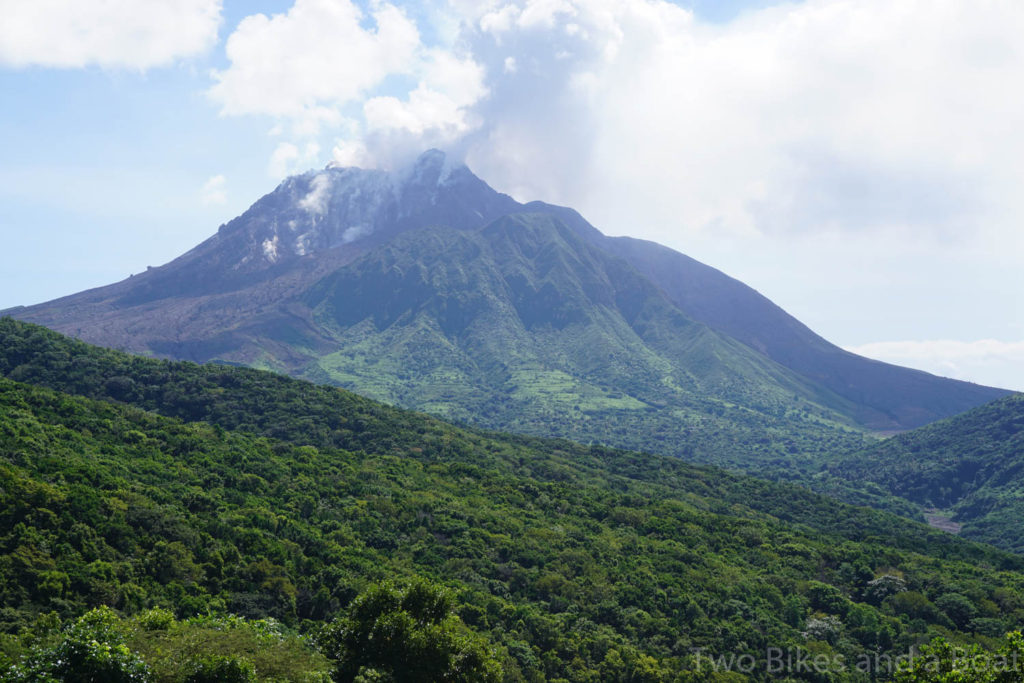
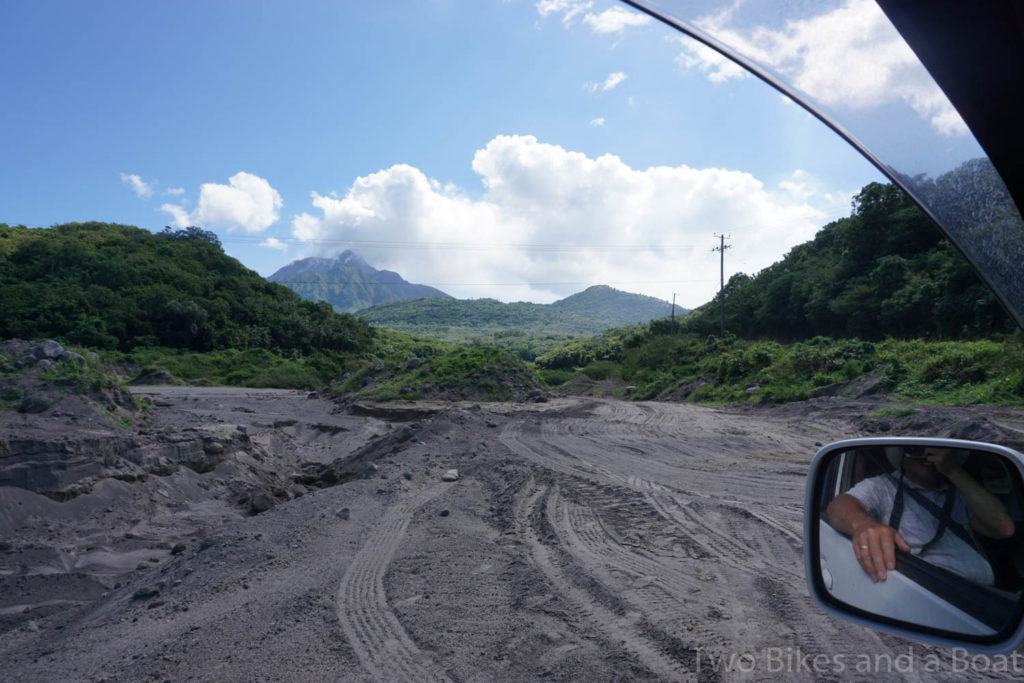

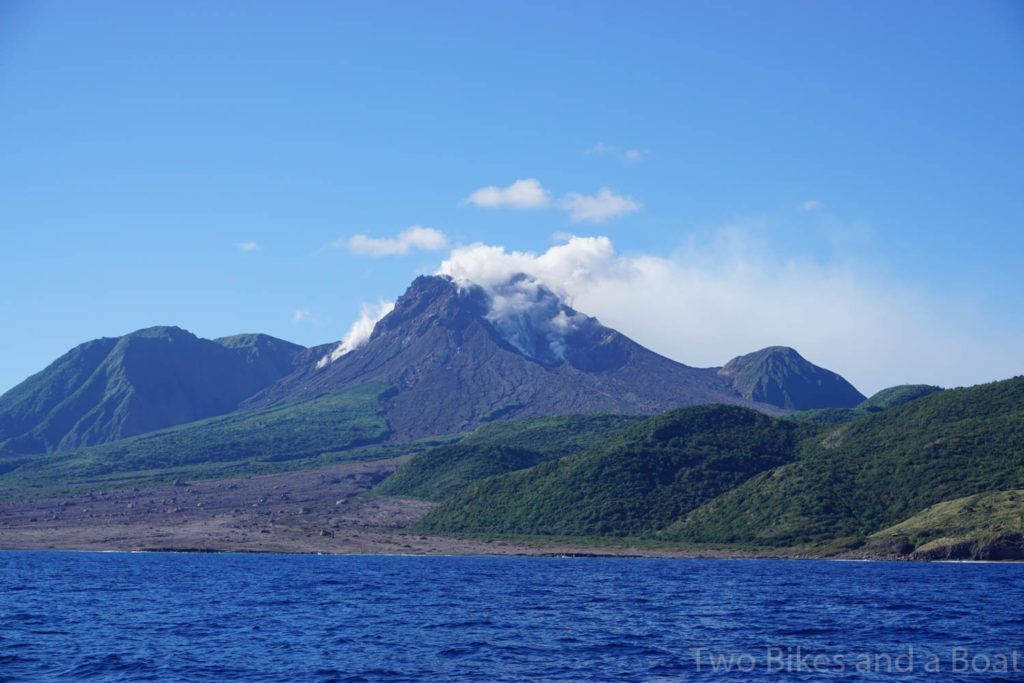


Fascinating! A wonderful account! I was in Tortola just after the big event and there were a number of people from Montserrat who had come to Tortola to shelter with relatives.
Thanks for the very interesting history lesson with photos and all. I felt like I was on the tour with you.